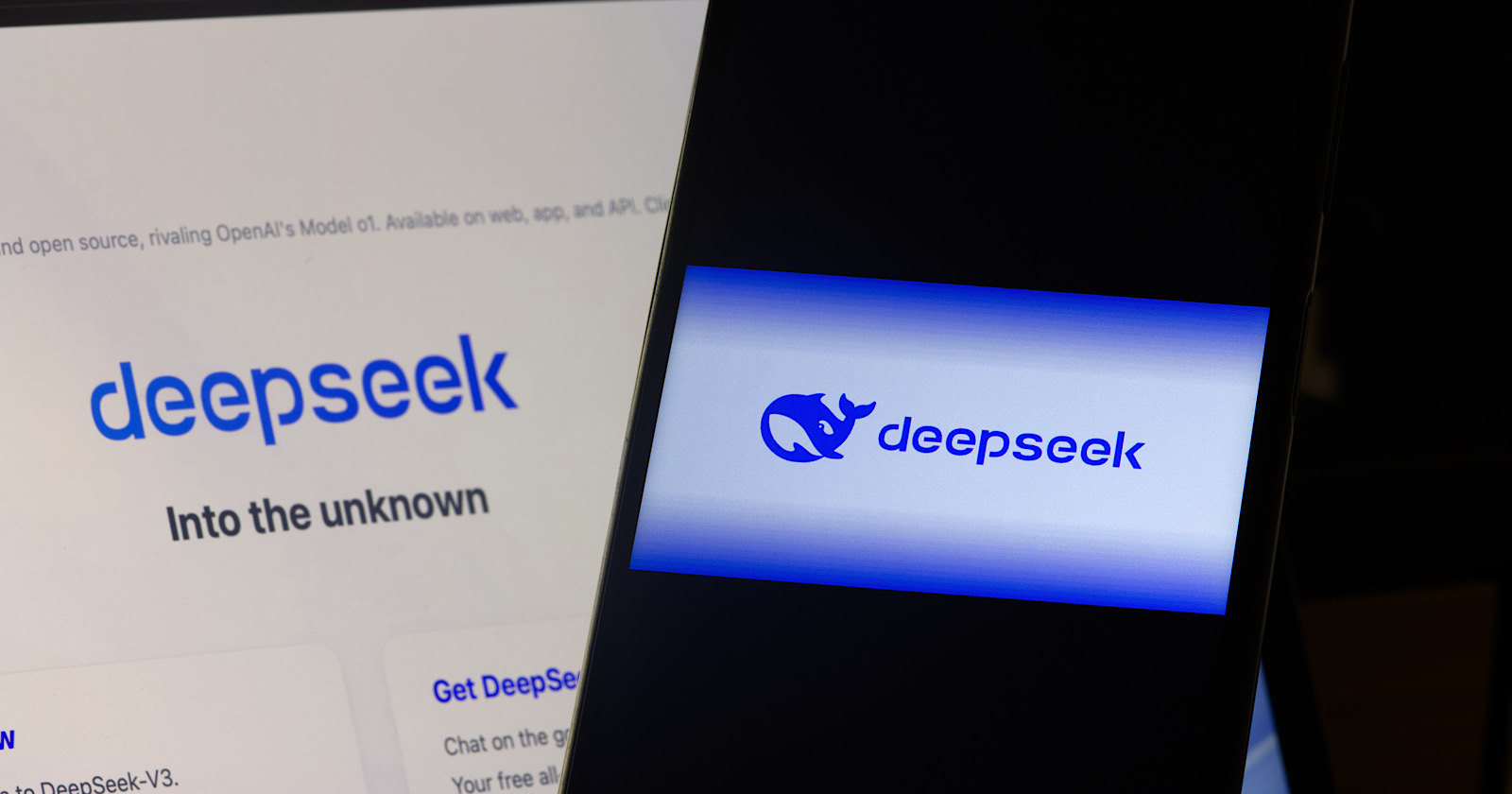The Strategy Gap: Social Video Is Not PPC Video via @sejournal, @LisaRocksSEM
CMOs looking to improve ROAS should rethink video. This article outlines why social content repurposing is killing performance and what to do instead. The post The Strategy Gap: Social Video Is Not PPC Video appeared first on Search Engine...

Video is dominating online across PPC ads and social media channels. Unfortunately, many advertisers still repurpose social videos for paid campaigns.
What works organically on TikTok or Instagram often falls flat in performance-driven environments like YouTube Ads or Performance Max.
This could lead to low engagement and poor conversions.
To compete in today’s attention economy, PPC video needs its own strategy that is built from the ground up with performance in mind.
This article explores why CMOs and senior marketers must treat video as a creative asset, that is, a conversion-driven engine and platform-specific.
The Disconnect Between Social Video And PPC Video
Some marketers start with social video and “cut it down” for paid. However, the two formats fundamentally differ in purpose, intent, and delivery.
Social video is built for engagement, likes, shares, and storytelling that captures attention in a feed.
PPC video, on the other hand, is engineered for a conversion action. It must capture attention, communicate value quickly, and drive a specific action with a call-to-action (CTA) statement.
Repurposing social content for PPC assumes that the creative context uses the same strategy for driving engagement.
Social videos often rely on trends, audio cues, or slow storytelling arcs. Those don’t translate to skippable, conversion-focused ad formats where you have just a few seconds to inform and impact.
The following table outlines the fundamental differences between social and PPC video.
| Category | Social Video | PPC Video |
| Purpose | Brand building, storytelling, and community engagement | Lead generation, sales, and performance-driven metrics |
| Viewer Intent | Passive browsing, entertainment | High intent, research, or decision-making mindset |
| Format & Delivery | Organic feed content, often square or vertical | Paid ad placements; needs variation for 16:9, 4:5, vertical, etc. |
| Sound/Audio | Often relies on music, trends, or narration | Must perform without sound; strong visuals are needed |
| Calls-to-Action | Often implied or delayed | Immediate and repeated; click-through or conversion-focused |
| Performance Metrics | Likes, shares, video views, engagement rate | CTR, conversion rate, ROAS, CPA |
Best Practices For PPC Video
PPC video ads should be intentionally created to drive conversions, not just views.
Below are key creative best practices that directly influence campaign outcomes, keeping in mind the details of different platforms:
1. Hook The Viewer Within The First 3 Seconds
Front-load your story arc by getting to the point of the video early, which often involves presenting the value proposition and the desired action.
You only have a moment to make viewers stop scrolling or delay the skip button. Use bold text, motion, or a strong question right away.
Example: “Spending too much on ads? Here’s a fix that saved our client $10,000.”
2. Format Video For The Platform
Each platform has different specs and user behaviors that require a custom approach for each. This is a perfect example where “one size does not fit all.”
YouTube standard videos typically requires horizontal (16:9), aligning with a sound-on viewing environment, while YouTube Shorts are vertical and platforms like Meta often favor square or vertical.
TikTok favors vertical, full-screen videos for sound-off autoplay. Develop your creative asset with this in mind.
3. Include A Clear Call-To-Action Early And Repeat
Don’t rely on a single CTA at the end. Video ads are built for direct response. Reinforce the action you want throughout the video.
Example: Start the video with “Click to get the offer,” and show it again midway and at the end.
4. Lead With The Benefit, Not The Backstory
People want to know what’s in it for them and how you solve their problem. Skip the warm-up and start with a direct benefit or result.
Example: Instead of “Our team spent weeks testing this,” say, “This ad strategy cuts CPC in half.”
5. Design With Platform Audio In Mind
For platforms with silent autoplay (TikTok, Instagram Reels, Facebook Feed): Prioritize visual communication. Many users watch without sound, so ensure your message still lands visually.
Use animated captions and highlight product features with motion text, so nothing is lost without audio.
For YouTube: Recognize that ads often play while users have the sound on.
While strong visuals are still important, leverage sound effectively through voiceovers, music, and sound effects to enhance your message and brand experience, as highlighted in YouTube’s Playbook for Creative Advertising [PDF] under the “Build for sound on” principle.
These elements influence how your video is served, watch time, and whether they take action.
Platform-Specific Video Strategies
Not all platforms serve video in the same way. Understanding how your content is delivered, measured, and optimized across each environment is critical to making PPC video work.
YouTube Ads
YouTube is a high-intent platform, with users actively choosing to watch content. Your ad will most often appear before or during another video.
The key here is overcoming the viewer’s “skip” behavior.
Maximize the impact of the skippable first five seconds. Use a bold visual or a clear problem-solution hook to immediately capture attention and provide value, making viewers want to watch more. Build a narrative that fits intent. Educational formats, product demos, or expert commentary perform well here. Consider longer-form content that addresses pain points thoroughly or showcases product features in detail. Leverage storytelling to connect with viewers who are actively engaged. End with a strong call to action. Take users to a landing page or offer page that extends the message. Example: A productivity software brand opens with “Wasting time switching tabs?” then shows how its tool solves it with a single view, ending with “Try it for free today.”Performance Max
Performance Max distributes video across placements like YouTube, Discovery, and Gmail. This requires a flexible, creative approach built to adapt to various ad spaces.
Upload multiple lengths: At minimum, include 6-second, 15-second, and 30-second versions. Varying lengths allow Google’s AI to test and serve the most effective creative for each placement and user. Include strong product visuals: Use the dedicated headline and description fields within the PMax asset library to deliver your primary marketing messages and calls to action. This allows Google’s AI to optimize the pairing of text and video for different platforms and user behaviors. Ensure key messages and branding are visually prominent and understandable without audio. Create for automation: Google optimizes based on performance. Give the algorithm assets that can stand alone, yet are also easy to mix and match. This includes various headlines, descriptions, and calls to action that can be paired with your video assets, allowing Google’s machine learning to find the most effective combinations. Leverage vertical image ads for YouTube Shorts: Google Ads now supports full-screen vertical (9:16) image ads specifically for YouTube Shorts within Demand Gen campaigns. This allows you to repurpose existing vertical image assets from platforms like Meta to reach users in this rapidly growing short-form video environment. Recommended size: 1080×1920. Example: A clothing brand uses 15-second vertical videos with close-up fabric shots and pricing overlays so the system can serve based on what performs.Meta Video Ads (Facebook And Instagram)
These platforms autoplay silently in-feed, so your creative must speak visually before sound is ever involved.
Front-load motion or emotion. Start with an action or a relatable facial expression. Think about creating a visual hook that stops the scroll and intrigues users enough to tap for sound. Use large text overlays and branded visuals. This keeps the message clear and recognizable at a glance. Keep text concise and easy to read on smaller mobile screens. Ensure your branding is integrated early and consistently. Mobile-first approach. Vertical or 4:5 ratio works best for in-feed and Stories. Utilize the full vertical space to immerse viewers and avoid the cropped look of horizontal videos on these platforms. Example: A skincare brand opens with a smiling woman applying cream, with large text: “Sensitive skin? See instant calm.”Optimize your video creative for the unique consumption habits and delivery methods of each platform, and increase the likelihood of engagement and better performance from your PPC video campaigns.
Making The Business Case To CMOs
CMOs and senior leaders often see video as a single, limited asset: make once, use everywhere.
Now, with the increasing sophistication of digital advertising platforms and the different ways video is consumed, the same approach is not cost-effective or performance-driven.
The increase of short-form video, dominance of mobile, and the emphasis on ad quality across platforms are driving a more strategic approach to video creative.
Consider:
Repurposed social content is likely to underperform in PPC environments because it was not created with the same goals in mind. Dedicated PPC video would be expected to increase return on ad spend by aligning creative with media placement. A video designed for PPC would (in theory) have higher engagement. Therefore, should have a higher ad quality score and higher delivery.Making the business case means shifting from “video as a campaign extra” to “video as a campaign must-have.”
CMOs are ultimately looking for measurable results and a strong return on investment from their advertising spend, and a platform-specific video strategy is the key.
Conclusion: PPC Video Is No Longer Optional
The days of treating all video the same are over, and it’s time to embrace this new approach. Video is now a powerful strategy for driving measurable ad results.
Advertisers should strategically build video with a clear understanding of each platform’s unique environment, their target audience’s intent, and the business goals.
Investing in creative that has a performance-first approach for each platform opens up opportunities for a stronger return on your advertising investment.
The future of successful PPC hinges on your team’s ability to master platform-specific video creation.
More Resources:
Google Ads AI Vs. Third-Party AI Tools: Comparison For Google Ads Creatives Google Ads Tutorial: How to Leverage AI Video Enhancements PPC Trends 2025Featured Image: Hryshchyshen Serhii/Shutterstock

 ValVades
ValVades 



















![The 2026 AI Search Benchmark Every SEO Leader Needs [Webinar] via @sejournal, @lorenbaker](https://www.searchenginejournal.com/wp-content/uploads/2025/11/1-259.png)








![Key Trends for Social Media Marketing in 2026 [Infographic]](https://imgproxy.divecdn.com/xYNkTUidoACgv221u37kAXP26fynLIf27LxWQKhpM5c/g:ce/rs:fit:770:435/Z3M6Ly9kaXZlc2l0ZS1zdG9yYWdlL2RpdmVpbWFnZS9lbXBsaWZpX21hcmtldGluZ19zdXJ2ZXlfaW5mbzIucG5n.webp)

